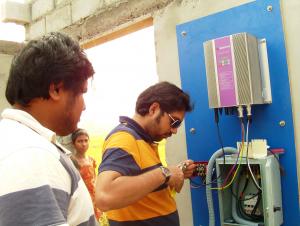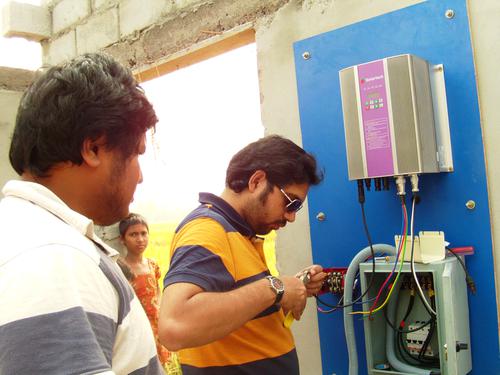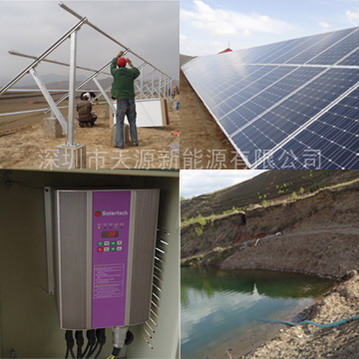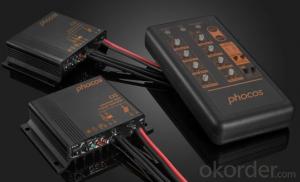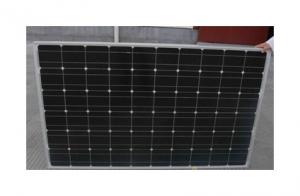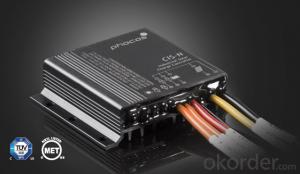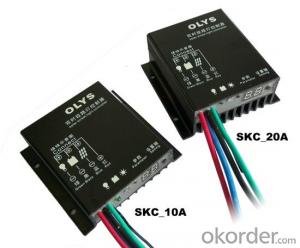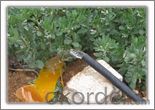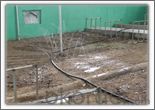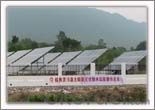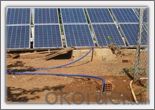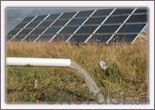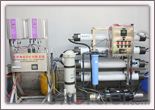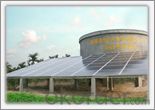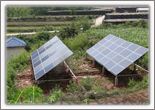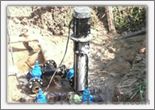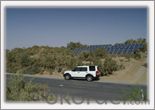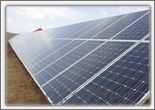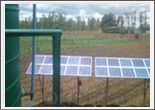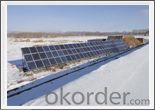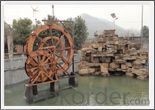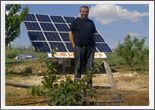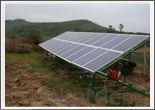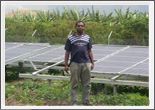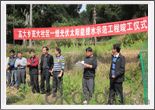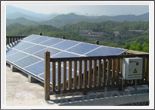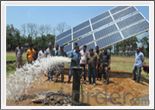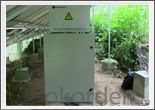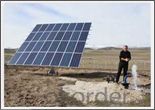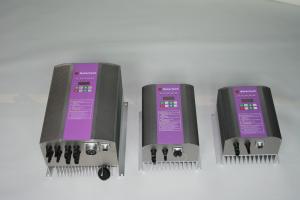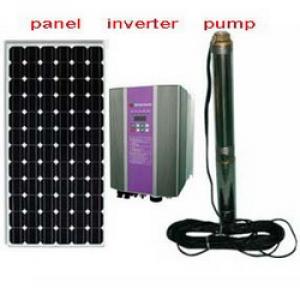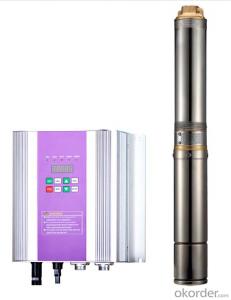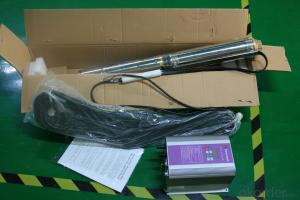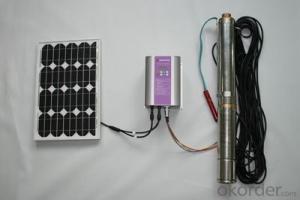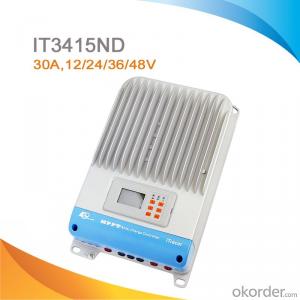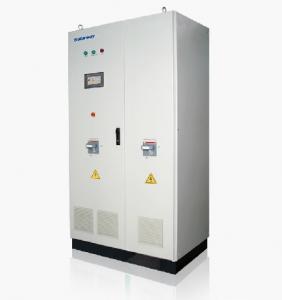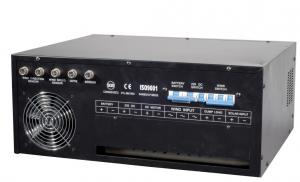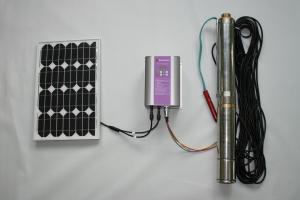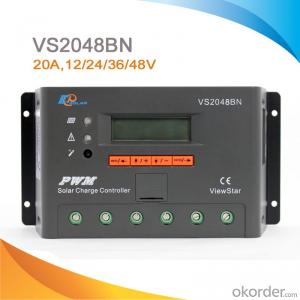40A DC Solar Water Pump Controller - Pumping System
- Loading Port:
- Shekou
- Payment Terms:
- TT OR LC
- Min Order Qty:
- 20 set
- Supply Capability:
- 100000 set/month
OKorder Service Pledge
OKorder Financial Service
You Might Also Like
Products
Solar Inverter Introduction:
Solar pumping inverter converts DC current from the solar array into AC current to drive the pump. With the function of MPPT (maximum power point tracking), it regulates the output frequency according to irradiation in real time to achieve the maximum power.
Solar Inverters Features:
1. Adopting the proposed dynamic VI maximum power point tracking (MPPT) control method; Fast response and stable operation; Better than the conventional methods which may lead to the problems including poor tracking performances, unstable or even cause water hammer damaging when the irradiation on the array changes rapidly.
2. The solar pumping inverters system is dispensed with energy storing devices, and stores water instead of electricity. It improves the reliability of the device, at the same time, it lowers the construction and maintenance costs of the system dramatically.
3. Digital control; automatic operation and data acquisition/storage of 8 years, etc; 98% of conversion efficiency, and complete protection.
4. In-line blocks; user friendly; convenient for operating; perfect cooling and shielding.
Technical Featrues
Solar Pumping Inverter Advantages:
1. To drive pumps equipped with 3-phase induction motors.
2. Optimized SPWM.
3. Various operation modes and MPPT algorithms are available.
4. Adjustable speed range of pump based on the actual situation of the system.
5. Available option of water-level detecting and control circuit.
6. Protection functions: lightning, over/low input voltage, over current and over load protection, etc.
7. Enclosure class: IP52.
8. Ambient temperature:-10~+50˚C.
Success Stories
►Middle East ►NaQu ►GuiLin
►Turkey ►XiNing ►YunNan
►Army stationed island ►Bangladesh ►Pakistan
►HaiNan ►HuBei ►Uganda
►XinJiang ►NingXia ►Afghan
►Zimbabwe ►Inner Mongolia ►Zhejiang
►Guangxi Guilin ►Turkey2 ►Botswana
►Naning ►Uganda ►Shaanxi
►Tsinghua University ►Pakistan ►Yunnan2
►FuJian ►Banqladesh ►YunNan3
►Turkey ►Inner Mongolia ►Senegal
Product Specifications
Model | Maximum input dc voltage | Recommended MPP Voltage | Rated Output Current | Output Voltage | Output Frequency | Net Weight | Gross Weight | Package Size | ||
Length | Width | Height | ||||||||
PB400L | 450 | 280-350 | 3 | 3PH 220V | 0-50 | 3.4 | 4.9 | 320 | 280 | 225 |
PB750L | 450 | 280-350 | 5 | 3PH 220V | 0-50 | 3.4 | 4.9 | 320 | 280 | 225 |
PF750L | 450 | 150-350 | 5 | 3PH 220V | 0-60 | 6.1 | 7.1 | 425 | 325 | 250 |
PB1500L | 450 | 280-350 | 7 | 3PH 220V | 0-50 | 4.0 | 5.6 | 355 | 280 | 225 |
PF1500L | 450 | 150-350 | 7 | 3PH 220V | 0-60 | 7.5 | 8.5 | 425 | 325 | 285 |
PB2200L | 450 | 280-350 | 11 | 3PH 220V | 0-50 | 4.0 | 5.6 | 355 | 280 | 225 |
PF2200L | 450 | 150-350 | 11 | 3PH 220V | 0-60 | 7.9 | 9.0 | 425 | 325 | 285 |
PB3700LA | 450 | 280-350 | 17 | 3PH 220V | 0-50 | 7.2 | 9.5 | 425 | 325 | 285 |
PB5500LA | 450 | 280-350 | 25 | 3PH 220V | 0-50 | 7.3 | 9.6 | 425 | 325 | 285 |
PB3700H | 750 | 500-600 | 9 | 3PH 380V | 0-50 | 7.2 | 9.5 | 425 | 325 | 285 |
PB5500H | 750 | 500-600 | 13 | 3PH 380V | 0-50 | 7.3 | 9.6 | 425 | 325 | 285 |
PB7500H | 750 | 500-600 | 18 | 3PH 380V | 0-50 | 7.7 | 10 | 425 | 325 | 285 |
PB11KH | 750 | 500-600 | 24 | 3PH 380V | 0-50 | 8.2 | 10.5 | 425 | 325 | 285 |
PB15KH | 750 | 500-600 | 30 | 3PH 380V | 0-50 | 8.4 | 10.7 | 425 | 325 | 285 |
PB18KH | 750 | 500-600 | 39 | 3PH 380V | 0-50 | 8.4 | 10.7 | 425 | 325 | 285 |
PB22KH | 750 | 500-600 | 45 | 3PH 380V | 0-50 | 18 | 21 | 600 | 465 | 350 |
PB30KH | 750 | 500-600 | 60 | 3PH 380V | 0-50 | 18 | 21 | 600 | 465 | 350 |
PB37KH | 750 | 500-600 | 75 | 3PH 380V | 0-50 | 20 | 23 | 600 | 465 | 350 |
PB45KH | 750 | 500-600 | 91 | 3PH 380V | 0-50 | 20 | 23 | 600 | 465 | 350 |
PB55KH | 750 | 500-600 | 112 | 3PH 380V | 0-50 | 20 | 23 | 600 | 465 | 350 |
- Q: Can a solar controller be used in off-grid applications?
- Yes, a solar controller can be used in off-grid applications. In fact, it is an essential component in off-grid systems as it regulates the charging and discharging of batteries, ensuring optimal energy storage and utilization from solar panels. The solar controller helps to prevent overcharging, over-discharging, and other potential issues, making it a crucial component for off-grid power systems.
- Q: How does a solar controller handle battery temperature monitoring and protection?
- A solar controller handles battery temperature monitoring and protection by continuously monitoring the temperature of the battery. If the temperature exceeds a certain threshold, the controller will take necessary actions to prevent any damage to the battery. This may include reducing the charging current or stopping the charging process altogether until the temperature returns to a safe range. Additionally, some advanced solar controllers may have temperature sensors directly connected to the battery, allowing for more accurate temperature monitoring and protection.
- Q: Can a solar controller be used in a solar-powered electric helicopter system?
- Yes, a solar controller can be used in a solar-powered electric helicopter system. The solar controller is responsible for managing the flow of power from the solar panels to the batteries, ensuring optimal charging and preventing overcharging. In a solar-powered electric helicopter system, the solar controller plays a crucial role in regulating the power supply, maximizing energy efficiency, and extending the flight time of the helicopter.
- Q: What is the maximum discharge voltage for a solar controller?
- The maximum discharge voltage for a solar controller typically depends on its design and specifications. However, it is generally recommended to keep the discharge voltage between 11.5 and 12.5 volts to prevent over-discharge and potential damage to the battery.
- Q: Can a solar controller be used with solar-powered electric vehicle charging stations?
- Yes, a solar controller can be used with solar-powered electric vehicle charging stations. A solar controller is designed to regulate the flow of electricity from solar panels to the charging station, ensuring optimal charging efficiency and preventing overcharging or damage to the battery. It helps manage the power generated by the solar panels and directs it towards charging electric vehicles, making it an essential component for solar-powered charging stations.
- Q: Can a solar controller be used in a grid-tied solar power system?
- Indeed, a solar controller has the potential to be utilized within a grid-tied solar power system. However, it is imperative to acknowledge that the primary function of a solar controller lies in regulating the charging and discharging of batteries within an off-grid solar system. In the case of a grid-tied system, the solar panels are directly connected to the utility grid, rendering battery storage unnecessary. Within a grid-tied solar power system, the role of the solar controller is confined to monitoring the performance of the solar panels and ensuring efficient electricity production. The controller may also offer data logging and monitoring capabilities, enabling the system owner to monitor energy production and consumption. Although a solar controller is not a crucial component in a grid-tied system, it can still prove advantageous for the purposes of system monitoring and maintenance. It provides valuable insights into the system's performance and aids in troubleshooting any potential issues that may arise. Moreover, certain solar controllers offer advanced features like MPPT (Maximum Power Point Tracking) technology, which optimizes the energy output of the solar panels, even within a grid-tied system. All things considered, while not essential, a solar controller can still be utilized within a grid-tied solar power system to elevate monitoring and optimization capabilities.
- Q: Can a solar controller be used with a solar-powered gym or fitness center?
- Yes, a solar controller can be used with a solar-powered gym or fitness center. A solar controller is designed to regulate and optimize the charging process of solar panels, ensuring efficient power generation and preventing overcharging of batteries. It can be used in conjunction with a solar-powered system to manage and control the flow of solar energy, allowing the gym or fitness center to operate on clean and sustainable power.
- Q: What are the main functions of a solar controller?
- The primary functions of a solar controller, which can also be referred to as a solar charge controller or regulator, involve the regulation of the solar panel system's charging process and the safeguarding of the batteries against overcharging or discharging. 1. Charging Regulation: The solar controller guarantees that the batteries receive the ideal amount of energy from the solar panels. It continuously monitors the solar panels' voltage and current and makes necessary adjustments to the charging parameters, thereby maximizing the efficiency of the charging process. 2. Overcharge Protection: Preventing the batteries from being overcharged is a critical role fulfilled by the solar controller. Upon reaching full charge, the controller redirects the surplus energy from the solar panels to a dump load or halts the charging process altogether, effectively shielding the batteries from potential damage caused by overcharging. 3. Battery Discharge Protection: The solar controller also prevents the batteries from discharging beyond a specific threshold. By monitoring the battery voltage, it automatically disconnects the load from the batteries if the voltage drops below a predefined level. This precautionary measure helps extend the battery lifespan by preventing excessive discharge. 4. Load Control: Some solar controllers offer the added capability of load control. They regulate the power output to connected loads such as lights or appliances, ensuring they receive an appropriate amount of power without excessively draining the batteries. 5. Monitoring and Display: Many solar controllers come equipped with monitoring features that provide valuable information such as battery voltage, charging current, solar panel output, and system status. This enables users to easily monitor their solar system's performance and make any necessary adjustments. Overall, a solar controller plays a vital role in ensuring the efficient and safe operation of a solar panel system. It accomplishes this by regulating the charging process, protecting the batteries, and providing monitoring and control capabilities.
- Q: Can a solar controller be used with a solar-powered telecommunications system?
- Yes, a solar controller can be used with a solar-powered telecommunications system. A solar controller helps regulate and optimize the charging of batteries connected to the solar panels, ensuring proper voltage and preventing overcharging or damage to the batteries. This is especially important in a telecommunications system where a consistent and reliable power supply is crucial.
- Q: How does a solar controller handle variations in solar panel temperature?
- A solar controller handles variations in solar panel temperature by implementing temperature compensation algorithms. These algorithms adjust the charging parameters, such as voltage and current, to optimize the charging efficiency and prevent overcharging or undercharging of the batteries connected to the solar panel system. By continuously monitoring the panel temperature, the controller ensures that the charging process is adjusted accordingly, allowing for efficient and safe operation of the solar panel system.
Send your message to us
40A DC Solar Water Pump Controller - Pumping System
- Loading Port:
- Shekou
- Payment Terms:
- TT OR LC
- Min Order Qty:
- 20 set
- Supply Capability:
- 100000 set/month
OKorder Service Pledge
OKorder Financial Service
Similar products
Hot products
Hot Searches
Related keywords
